
ItÂ’s always been possible to cobble together a couple of free, open source tools to rip and compress DVDs into playable files on the Treo. Video clips like mpeg, avi and mp4 files will often play on the Treo with nothing more than the free TCPMP player and its codecs.
But free toolkits DVD conversion toolkits can have a daunting learning curve for novices, and files dragged and dropped directly into the Treo often leave much to be desired in their formatting. Commercial solutions have streamlined and automated the conversion and formatting process to virtually eliminate manual intervention.
I recently reviewed one such tool, Pocket DVD Wizard, and will now take a look at DVD Catalyst 3, just released in a new 3.2 revision.
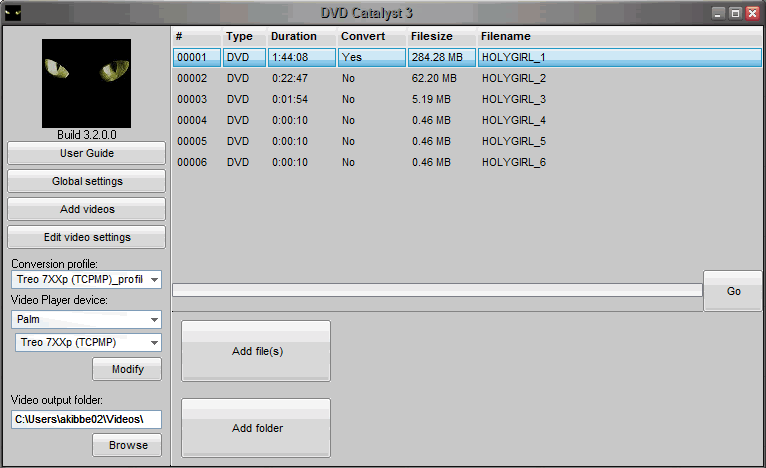

Where Pocket DVD Wizard uses a wizard-style interface, stepping the user through a sequence of configuration options each time a conversion is made, DVD Catalyst aims to reduce, and even eliminate, the number of configuration steps by saving frequently used settings. Once the proper conditions are set, conversion may consist of nothing but inserting a DVD into the drive, and waiting for the finished output file.
Installation
Like Pocket DVD Wizard, DVD Catalyst 3 is Windows desktop software, not native to a specific device. Unlike Pocket DVD Wizard, whose trial version allows the user to convert up to five minutes of video before registration, DVD Catalyst’s trial runs unrestricted for seven days: “No watermarks in the video files,” boasts the product description, “and most definitely no 5 minute video clips of a 2 hour movie.” Ouch!
Operation
In addition to Palm OS and Windows Mobile Treos, DC3 (the companyÂ’s shorthand for the app) has a large menu of conversion profiles for many target devices: the iPod Touch, Sony PSP, Xbox 360, Nokia N70 and others. Each device setting allows user customizations to be saved as a modified profile.

The Palm profile I used was a 7XXp (TCPMP) setting, with most defaults reasonable enough to leave untouched.
- Player Screensize: 320 x 320
- Video quality (Kbps): 300
- Video mode: 1 Pass
- Sound quality (Kbps): 64
- Audio mode: Stereo
- Conversion format: divx5_mp3_palm
- Volume: 15
- Framerate: 25
- Do not resize to player screensize: Unchecked
The one parameter in the above list that’s changed from its default is the Volume, which was originally set to 5—far too weak on my tests; above 15 introduced distortion.
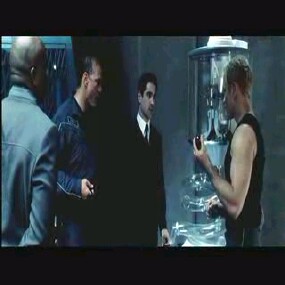
The framerateÂ’s default of 25 fps looks very good, but I constantly had problems adjusting the video to synch with the audio track. With Minority Report, the actorsÂ’ lips continually outpaced their dialog, even when lowering the framerate to 18. Pocket DVD Wizard offered much better (though still imperfect) audio/video synchronization. The latter app features a couple of controls lacking in DC3: a Re-Sync AV switch and an Auto detect DVD frame rate option in its DVD Frame rate menu.
Despite the faster video track playback, the audio tracks often sounded slightly sped-up and higher pitched than the voices on the source, which occurred even on the lowest acceptable framerates. The results werenÂ’t exactly Alvin and the Chipmunks, but the speed discrepancy was noticeable.
Further configuration options beyond device profiles are available in the Global settings and Edit video settings panes.
Global settings
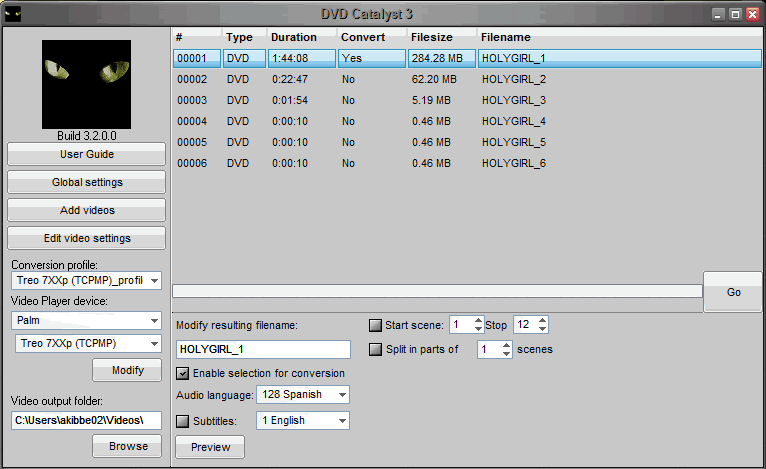
Global settings consists of panels for Media options for activation defaults like “Scan for DVDs on startup” and “Eject DVD when done”; Language options for subtitle and audio language settings; and Conversion options which, among other settings, features important Auto-crop options for dealing with black bars.

Three Auto-crop options are available: “No cropping”; “Remove black bars from file,” which crops the top and bottom bars from file, but maintains the full image (i.e. not fullscreen, but improved image quality); and “Remove black bars from device,” which crops the top and bottom bars from the file, and also cuts the sides of the image for fullscreen effect. Of the three, I preferred the “Remove black bars from file” option, since I generally dislike cropping, and the resulting picture was still large enough to be very watchable. Options for manual cropping are available in Preview Mode, which I’ll discuss shortly
Edit video settings
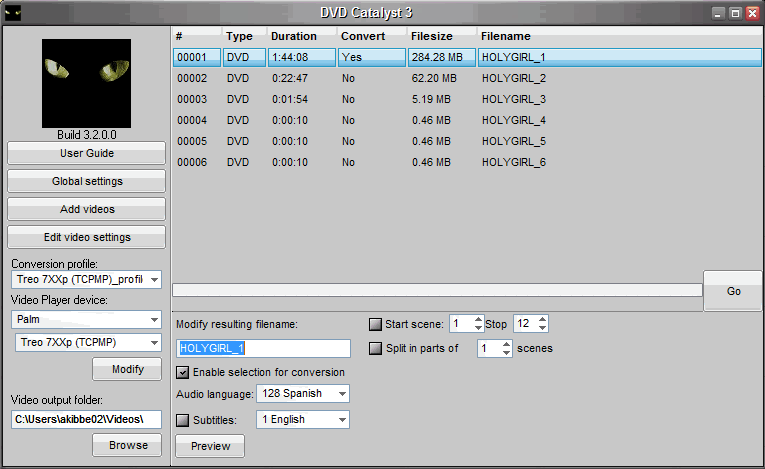
Edit video settings displays the DVD’s tracks as a queue for batch conversion. By default, DC3 flags the largest track for conversion, designated by “Yes” in the Convert column, but a minimum playtime can be set back in Media options for the queue to flag smaller tracks for conversion automatically. Other unique options in the Edit pane include “Modify resulting filename” and “Start scene”/“Stop” for beginning/ending scene numbers to convert. I’d prefer that DC3 allow user-definable start and end conversion points by specifying time delimiters, not just whole scenes. This would be helpful when creating test clips by skipping past credits and other non-representative sections of features. It is possible to preview the output at any start point, but apparently conversions themselves must start from the beginning of a scene. Only the length of a conversion can be specified—you can, for example, make a 3-minute test clip. Most users will be converting whole feature tracks most of the time, not test clips, so the start/end point issue isn’t a make-or-break feature.
Preview mode
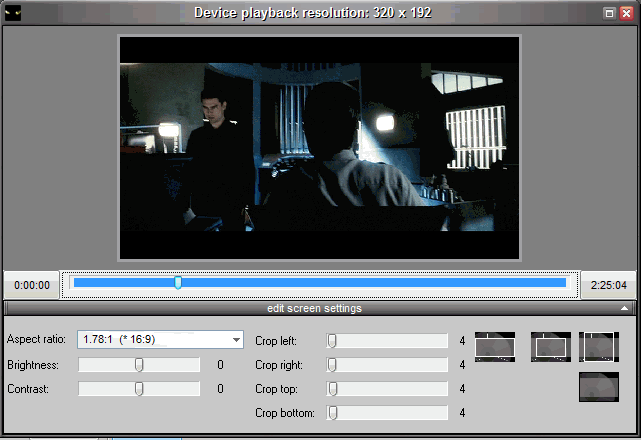
The Preview mode referenced above displays the DVDs tentative output in its autodetected aspect ratio by default. On the Treo setting, the original 320 x 320 preview matte (window) disappears, replaced by a matte of 320 in width and a height depending on the final aspect ratio and manual crop settings. I wish the matte would remain square, since itÂ’s hard to remember what a centered height of 192 looks like on the Treo compared to 240 or 288. Manual cropping is adjusted by top, bottom, left and right sliders; or by one of four crop buttons.
- The first button eliminates the top and bottom black bars from the scanning, resulting in lower image quality from magnifying the remaining area. Black bars at the sides can still appear, since only the top and bottom bars are cropped.
- The second button crops all black bars and fits the image to screen. This is basically pan-and-scan fullscreen.
- The third button resets the cropping, which is necessary if the crop detection crops off too much. Crop detection keys on large black areas, which can lead to inaccuracy if activated during a dark scene.
- The fourth button removes black bars and makes the image fullscreen using half values—like the second option, but cutting off less of the image at the edges for less pronounced black bars on the sides.
Conclusion
Since many conversion tools like DC3 heavily tout black bar removal, I have to assume that most users, unlike myself, prefer fullscreen video. If that’s the case, you can pretty much use the defaults in Global settings after selecting your device, hop on over to Edit video settings and hit the big “Go” button to start your conversion. Subsequent conversions really are the “zero-click” procedures” hyped by the authors.
If youÂ’re any pickier, you may need to do a lot more trial and error before the cropping and aspect ratio are configured to your liking. Most of the target device listed are not square-format like the Treo, but rectangular.
I need to qualify my “3” rating for the “Playback quality,” which amalgamates video and audio—especially their synchronization. I’m still groping for audio synch settings that keep the soundtrack in fidelity with the original DVDs’. Most mobile video viewers are used to lower-than-DVD framerates, and realize that some mismatch is bound to happen. But while DC3’s video quality is noticeably better using default settings than Pocket DVD Wizard’s, the poorer AV synch definitely impacted the overall playback experience.
|
|
| Pros |
Configurable to one-step (zero-click) conversion
Stores customizable profiles for multiple target devices
Queues and batch converts multiple files
Fully enabled 7-day trial version
Provides many crop and aspect ratio adjustments
|
|
| Cons |
Difficult to accurately preview square-format output with non-fullscreen options
No synch correction for audio tracks
Audio tracks sometimes noticeably faster/higher-pitched than normal
|
|